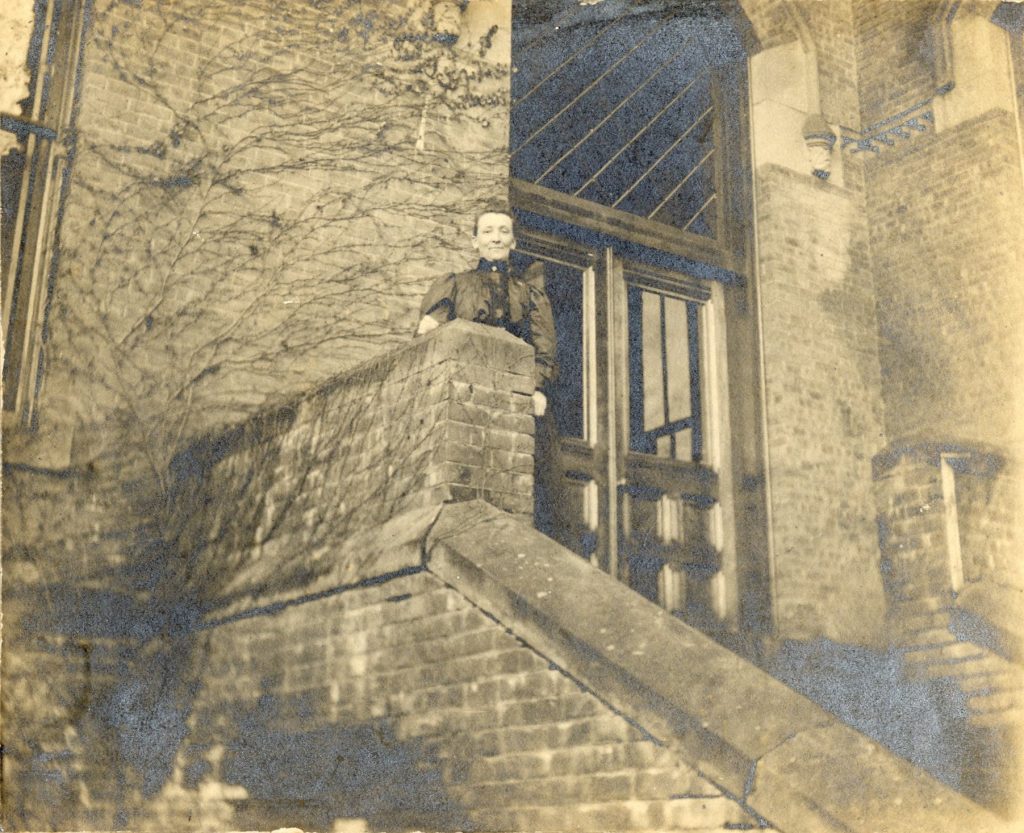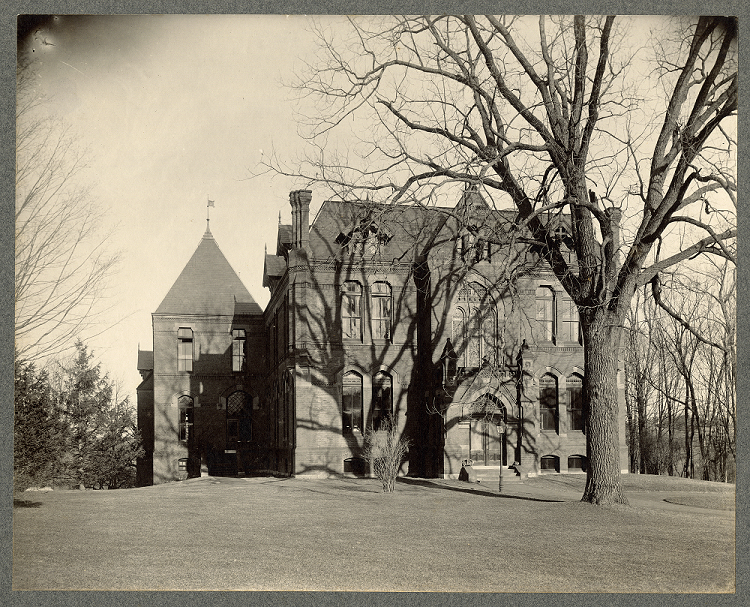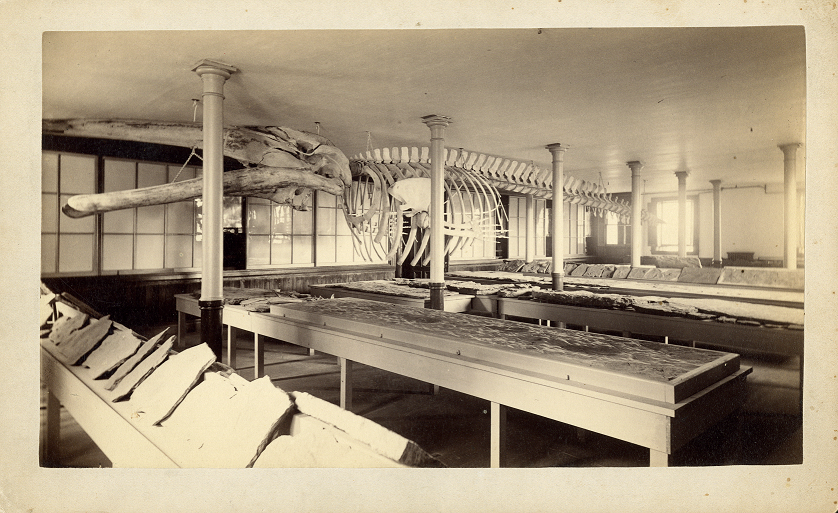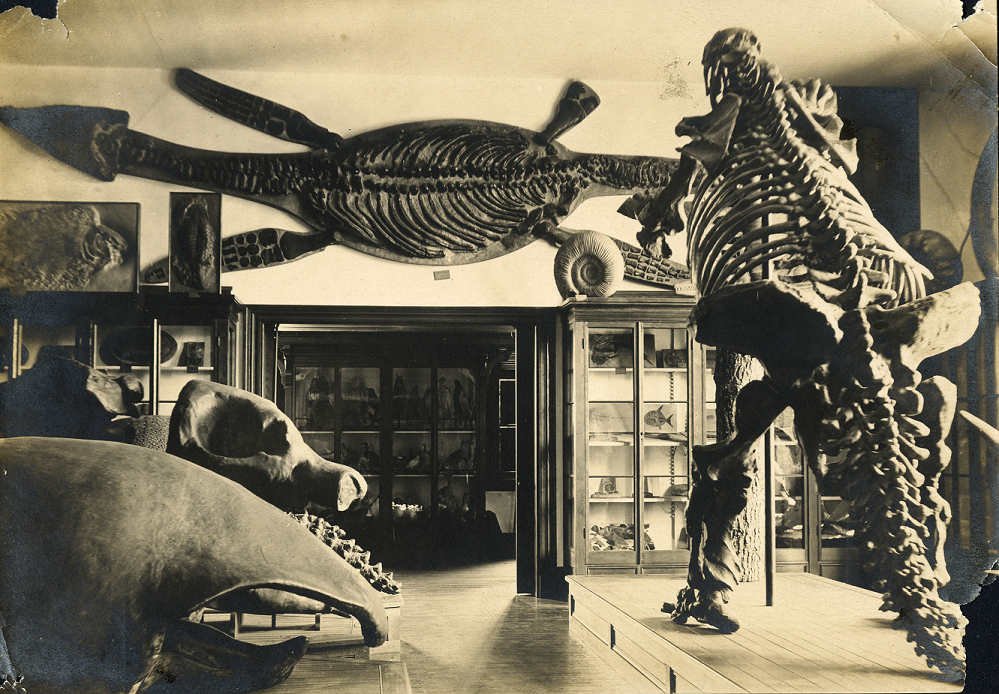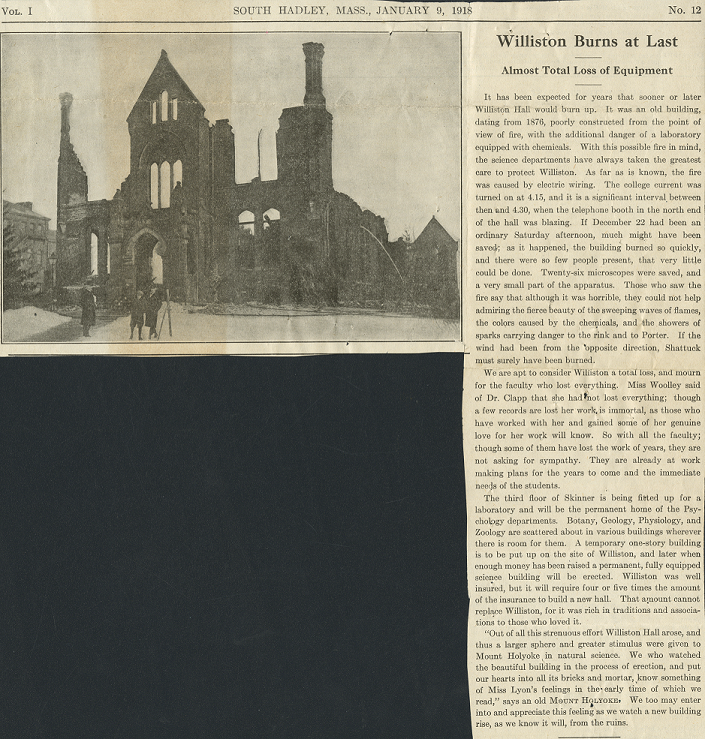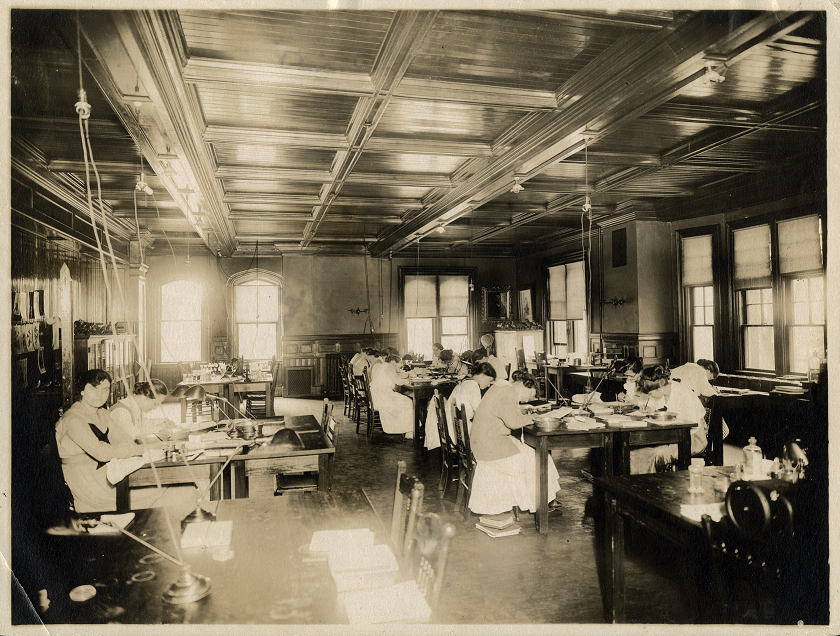Williston Hall
Williston Hall preceded Cornelia Clapp Laboratory. It was opened in 1876 as a science and art building. It housed one of the largest collections of fossil casts, rivaling Harvard and Yale. Eventually, the space within Williston proved to be insufficient for the growing science departments. Dr. Cornelia Clapp moved outside, operating one of her labs under a tent in order to escape the cramped conditions. In 1889, the Annex was completed, providing the much-needed space.
Unfortunately, during the winter break of 1917 Williston Hall burnt down. Not built with fire safety in mind, and with the campus mostly empty, the fire was not caught in time before it began to rapidly spread. The wind was blowing in the right direction to contain the fire only to Williston, but it was completely destroyed.
Temporary Facilities
After Williston Hall burnt down, the departments were quickly moved into temporary facilities that immediately saw use in the spring. Psychology was given permanent residence on the third floor of the new Skinner Hall. Geology was moved to outfitted rooms on the ground floor of the library. Botany, zoology, and physiology made use of the basement of Mary Lyon Hall. The following fall, a temporary laboratory was finished to house the botany, zoology, and physiology departments. Built using salvaged bricks from Williston Hall, after Clapp Laboratory was constructed, it would become the Commissary building. It was later renovated into the Ciruti Language Center in the late 1980s.
